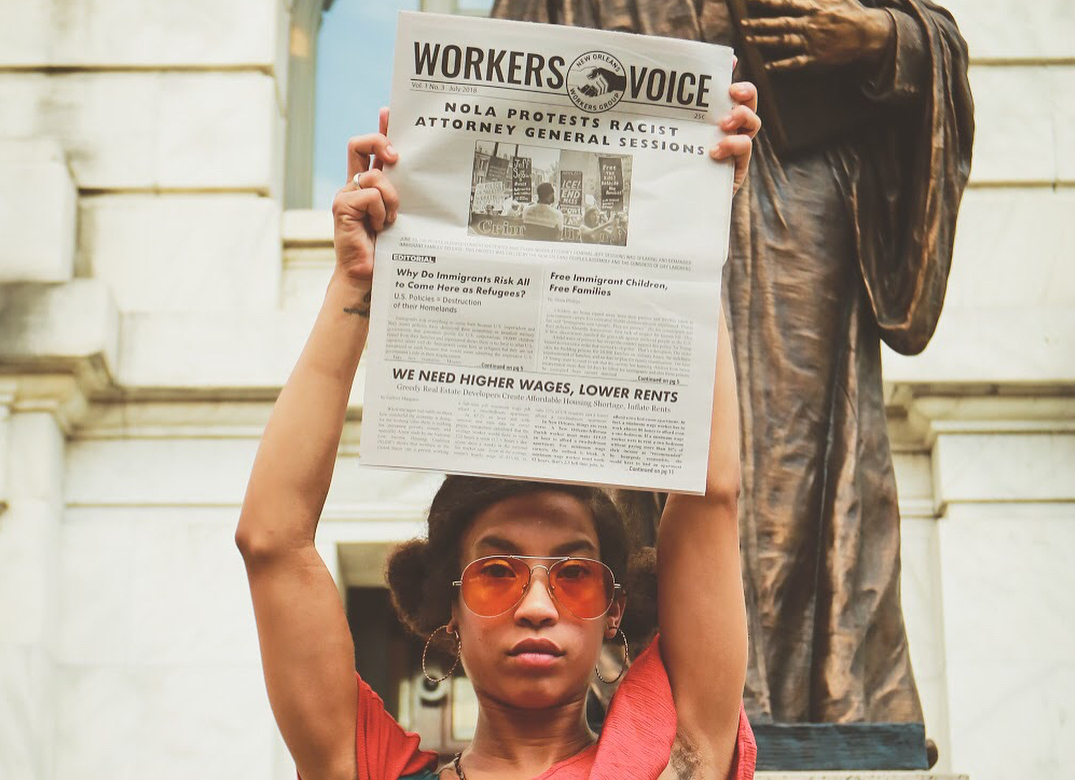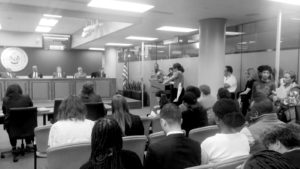On June 28, 1969, a battle broke out.
The police raided the Stonewall Inn in New York, and the queer and trans people there and in the neighborhood fought back. The raid began as many others had, with the police separating people in the bar, focusing their abuse on those who least conformed to their ideas of gender. The resistance was immediate, but as the night continued it grew.
At the height of the resistance, the police had to barricade themselves inside the bar they had come to raid, taking a hostage and trying to turn a fire-hose on the crowd. The crowd responded with bricks and fire until more cops arrived. By the second day of the battle, the LGBTQ people of New York were joined by allies, including local political and anti-war organizers, and groups of trans and queer people fought police in the streets. Days of tension followed, until a third and final day of violence brought an end to the Stonewall Riots.
For decades, LGBTQ struggle in the United States had been building, but Stonewall served as a turning point and the birth of new movements. Inspired by working class and anti-colonial struggles around the world (especially Vietnam, China, and Algeria) and the civil rights struggle in the United States, the LGBTQ community in America formed the Gay Liberation Front within a week of Stonewall. The modern gay rights struggle was born in opposition to the most violent oppression.
POLICE RAIDS
The police raids at Stonewall were not unique. Being gay was a crime in almost every state, and in most places anyone caught wearing less than three pieces of clothing that “matched” the gender they were assigned at birth could be arrested. In 1966, a similar riot broke out in California as black drag queens and trans women fought back against raids. Across the United States, LGBTQ people arrested in the raids of their bars (often the only safe spaces they had) were subjected to sexual assault, police brutality, and public humiliation as they were exposed by the local papers. Many lost their jobs and their families. Many lost their lives.
NEW ORLEANS CONNECTION
According to many accounts, a New Orleans-born woman, Storme Delarverie, threw the first punch at Stonewall. As the police dragged her away, she is reported to have called to the crowd to fight back. In other accounts, a “butch, black lesbian” unidentified by name not only threw the first punch, but fought her way back to the bar three times before being captured, inspiring the crowd to begin throwing bricks and trash at the police. A working class woman, Delarverie was known to others in the neighborhood as a protector of their streets.
WORKERS & OPPRESSED PEOPLE FIGHT BACK
Most of those who fought at Stonewall were not activists or community leaders at the time. They were working class queer and trans people, most of them black or LatinX. Many were homeless youth that lived nearby. They had been assaulted and harassed by the police. Future leaders in the LGBTQ struggle like Miss Major, Marsha P. Johnson, and Sylvia Rivera were all part of the fight.
It was a response not just to oppression of LGBTQ people, but to racist violence as well, as the people most targeted in the raids were the black and LatinX people.
PRIDE
Many radical queer and trans organizations were born in the wake of Stonewall. The GLF, Street Transvestites Action Revolutionaries (STAR), and more formed. People around the country–and the world–were inspired to begin fighting back.
Militant actions were the heart of these early resistance organizations, and people of all ages, races, and genders were welcome in most. They were working class groups that fought not just homophobia and transphobia, but racism, imperialism, and capitalism.
Modern Pride celebrations, sponsored by corporations, overwhelmingly white, with police and military featured prominently in their parades, have strayed from the original spirit of queer resistance. As rights won in struggle are reversed by the courts and law-makers, there is an urgent need for LGBTQ resistance, inspired by the revolutionaries of Stonewall.

